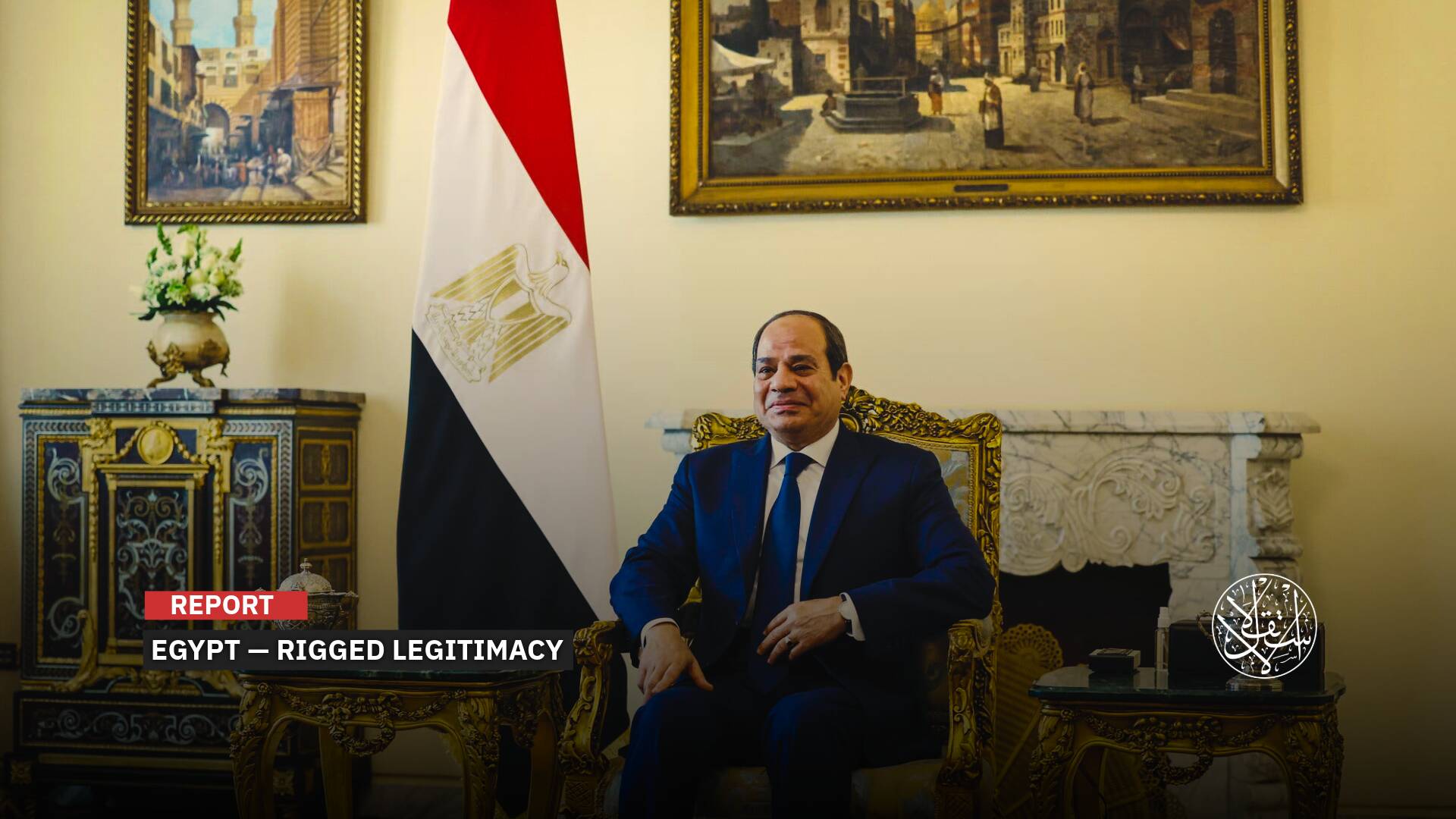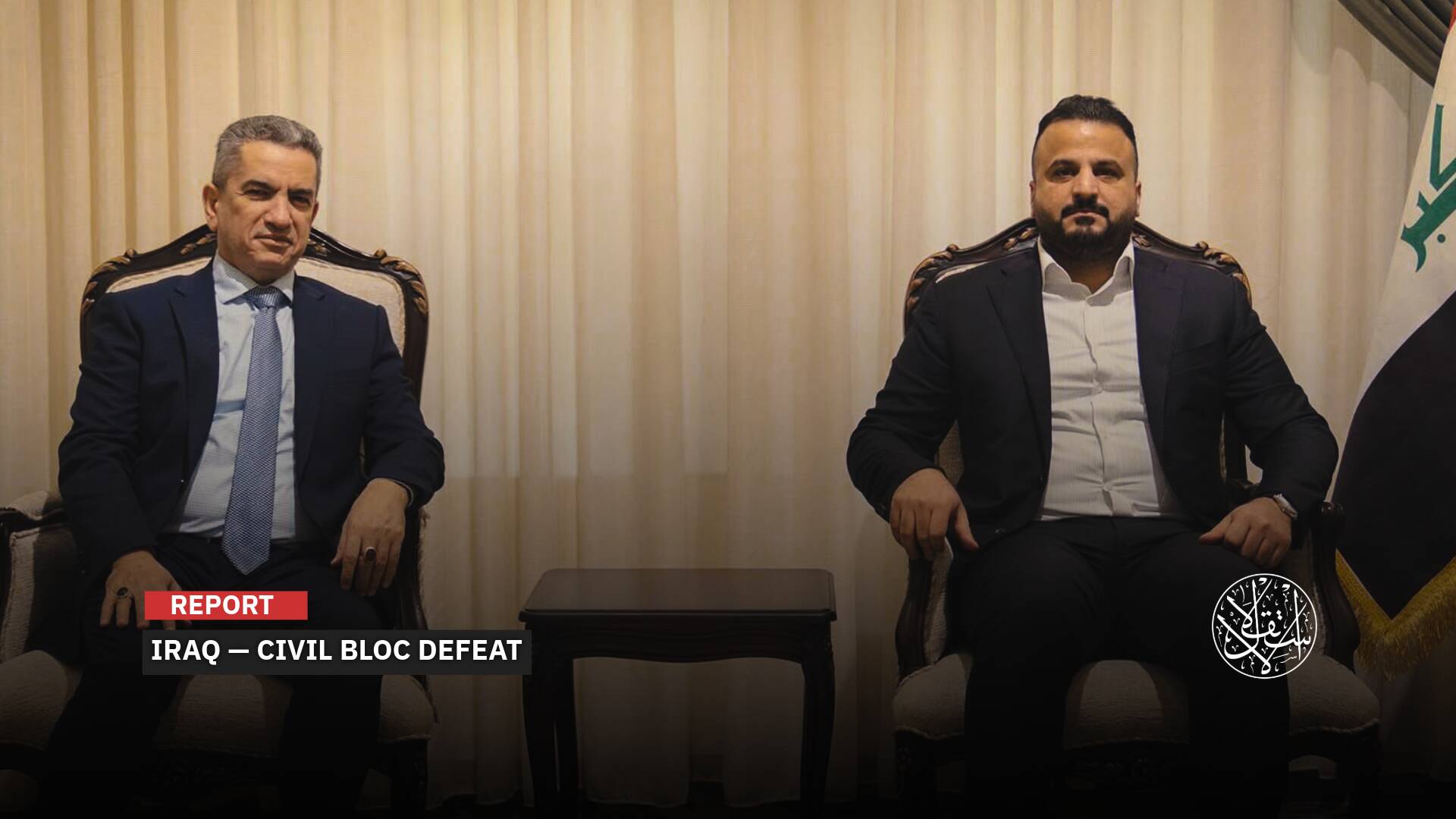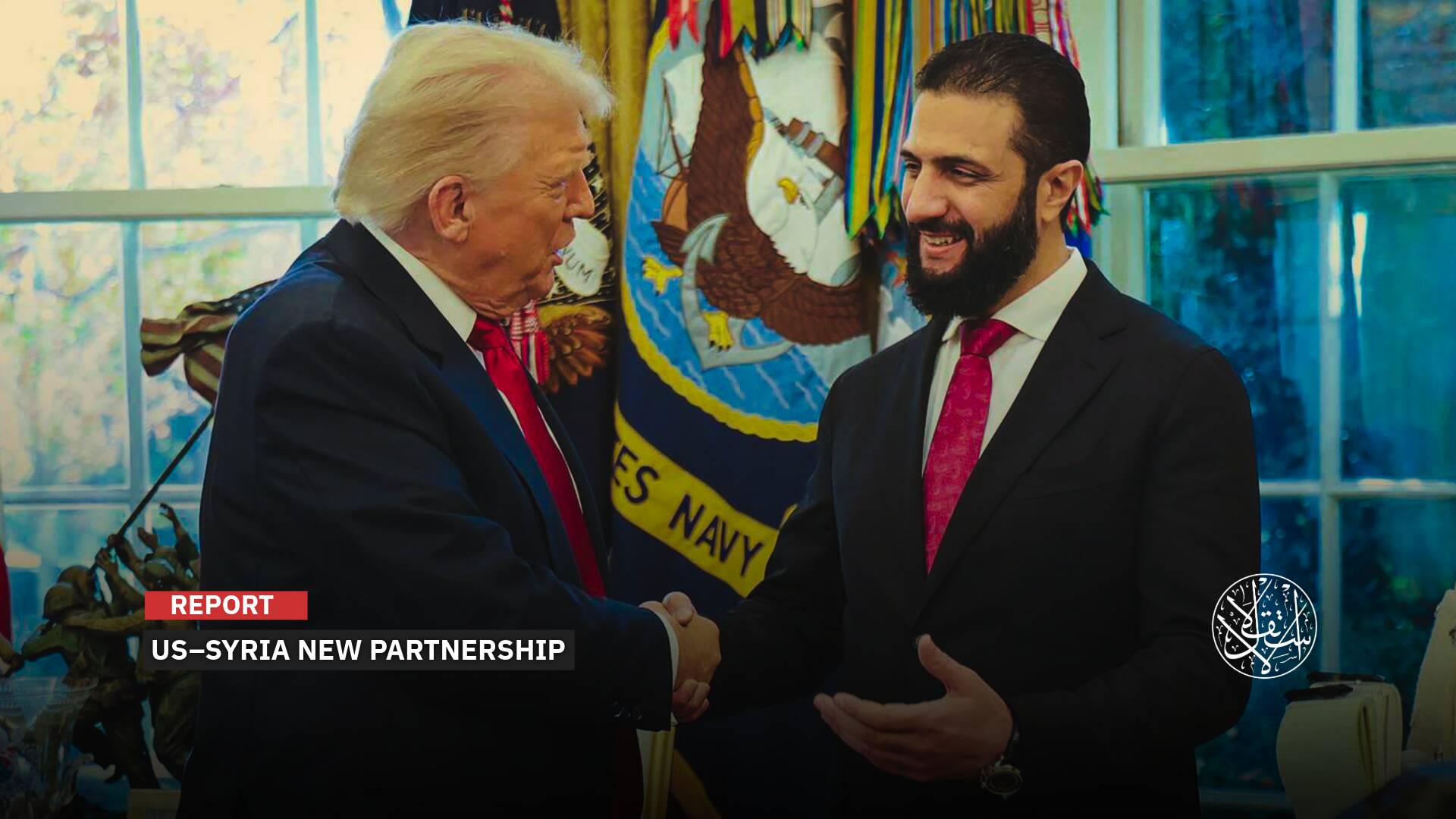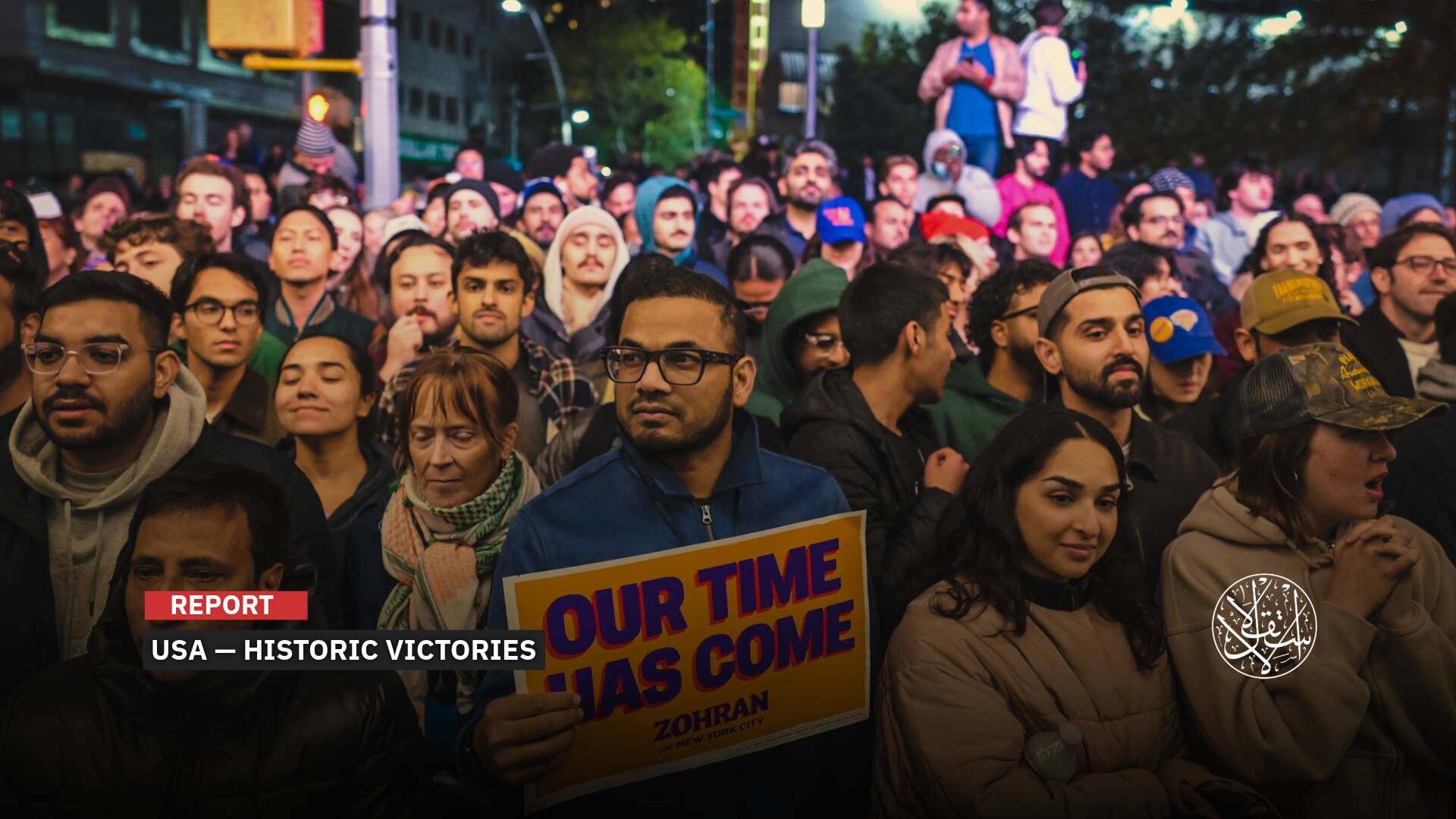Why Trump Avoids Directly Labeling the Muslim Brotherhood a ‘Terrorist Organization’
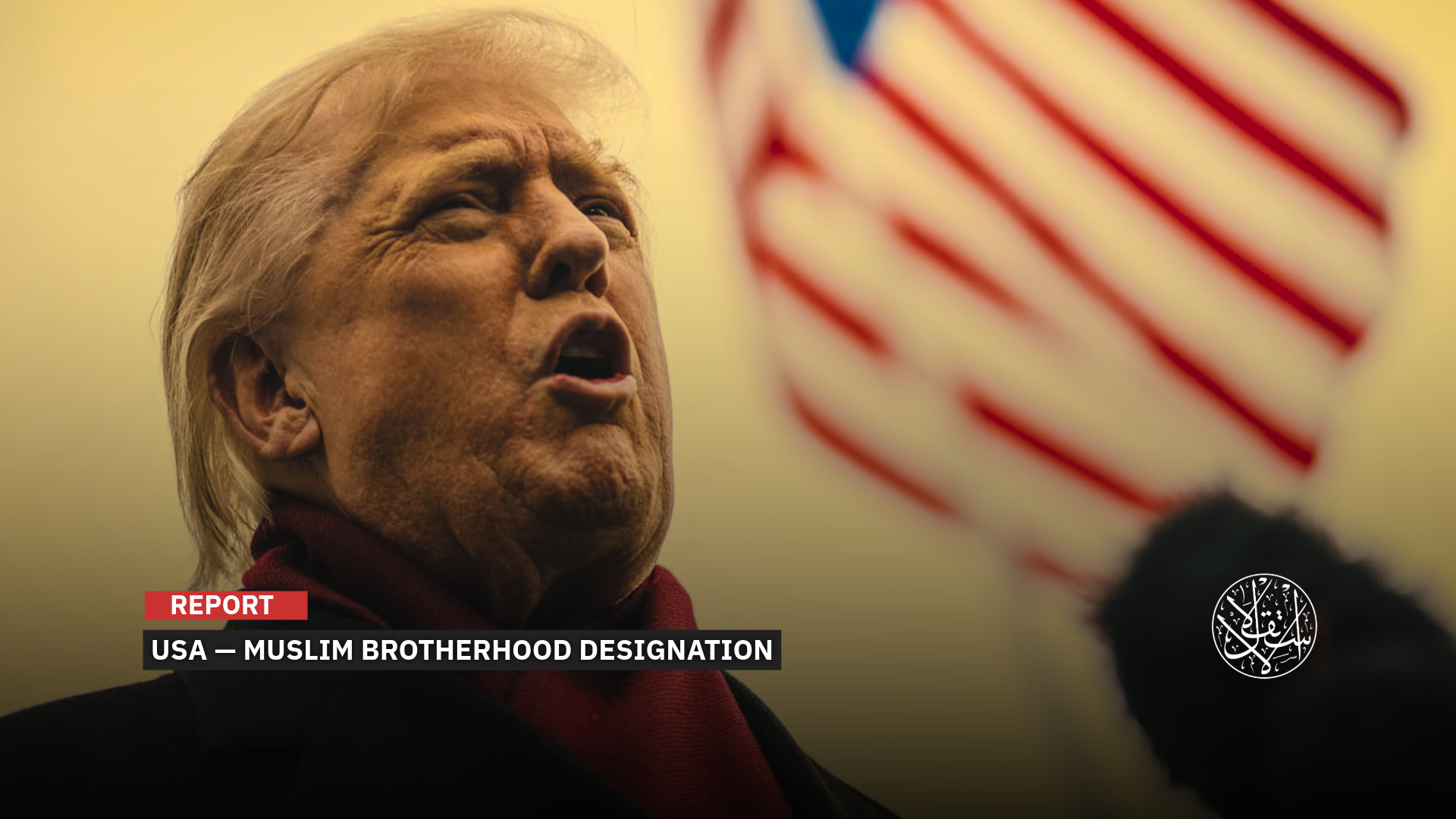
Trump’s decision on the Muslim Brotherhood wasn’t a direct or final designation but rather an initial step.
On November 24, 2025, President Donald Trump signed an executive order instructing the Secretaries of State and Treasury to evaluate whether certain branches of the Muslim Brotherhood should be designated as Foreign Terrorist Organizations (FTOs) and Specially Designated Global Terrorists (SDGTs).
The decision triggered widespread confusion. Arab governments and several anti-Brotherhood groups rushed to portray the move as a formal terrorist designation, even though no such designation has been made and the order simply calls for a review.
The move also raised pressing questions: Why didn’t Trump directly designate the Brotherhood’s branches in Egypt, Lebanon, and Jordan, opting instead to request a study first? Why were these specific branches singled out? And does the order ultimately advance Israeli occupation interests in the aftermath of Operation al-Aqsa Flood, or is it rooted in purely American priorities, as some claim?
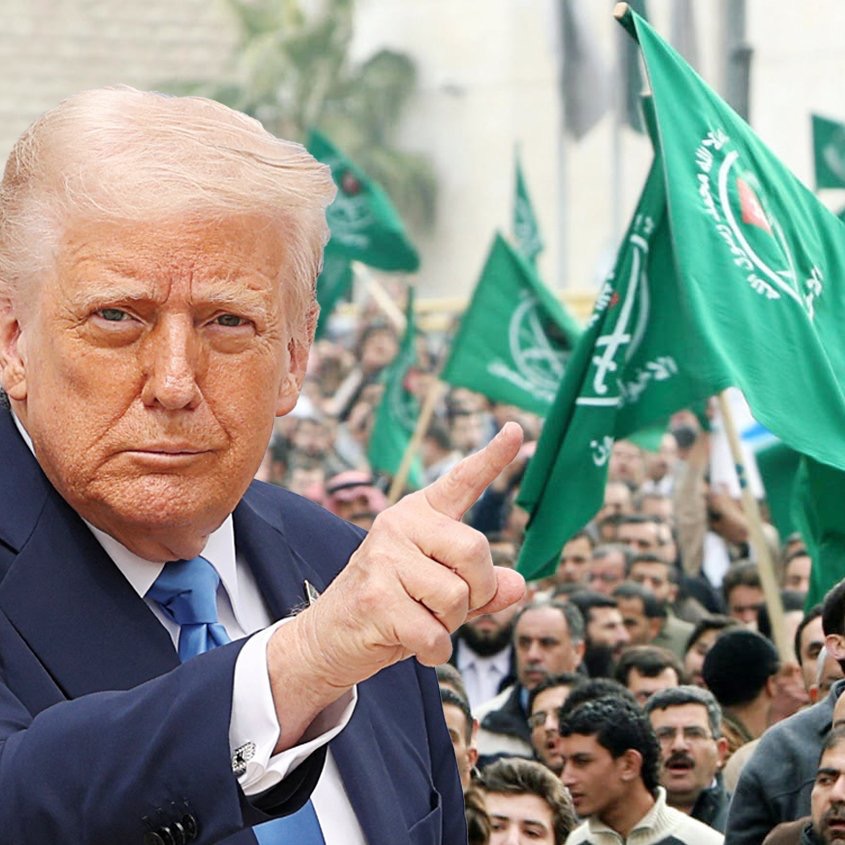
What Does the Order Actually Say?
Trump’s executive order calls for launching a process to examine the designation of certain branches of the Muslim Brotherhood, making it clear that this is not a direct or final designation but an initial step that opens two possible paths:
First: The order could be the start of formal procedures that may eventually lead to designating certain Brotherhood branches around the world as Foreign Terrorist Organizations.
Second: The goal may simply be to study and assess whether such a designation aligns with U.S. law—especially since the Trump administration explored the same move during his first term before backing away. This explains why the new order is intentionally broad and noncommittal.
Analysts note that the step does not target the Brotherhood as a whole but only certain branches, specifically those cited in the order as examples: Egypt, Lebanon, and Jordan, singled out because individuals or groups linked to these branches allegedly supported Hamas during the Operation al-Aqsa Flood.
The order itself does not designate any branch; it merely instructs the State and Treasury Departments to study the issue and deliver recommendations on whether specific branches should be added to terrorism lists.
According to U.S.-based journalist Mohamed Elsetouhi, Trump has not declared the Muslim Brotherhood a terrorist organization. He has only taken a preliminary procedural step in that direction, leaving the final decision to the relevant agencies.
BBC described Trump’s order as a move to designate certain branches of the Muslim Brotherhood as terrorist organizations, rather than a final decision.
The Guardian, on November 24, noted that Trump is initiating the process to designate Brotherhood branches and is requesting a report on the organization’s branches in Lebanon, Egypt, and Jordan, signaling that no final designation has yet been made.
Calling the order a comprehensive designation of all Muslim Brotherhood branches is “inaccurate,” as the executive order contains no direct designation and does not apply to all branches. The text only directs the start of an assessment process that could later lead to the designation of some branches, not others.
Trump’s order instructs the Secretaries of State and Treasury, in consultation with the Attorney General and the Director of National Intelligence, to submit a report within 30 days on whether any branches—such as those in Lebanon, Egypt, and Jordan—should be designated as Foreign Terrorist Organizations (FTOs) under 8 USC 1189 or as Specially Designated Global Terrorists (SDGTs) under 50 USC 1702 and Executive Order 13224.
The order further directs that, if the report recommends a designation, the Secretaries must take the necessary executive actions within 45 days to officially list the identified branches as FTOs or SDGTs, if warranted.
The order explicitly states that its ultimate goal is to dismantle the capabilities and operations of the specified branches, deny them resources, and eliminate any threats they may pose to U.S. citizens and national security.
Despite the procedural nature of the order, observers say that issuing it signals a clear intent to eventually move toward designation, particularly targeting those who supported Hamas during Operation al-Aqsa Flood, in ways that serve Israeli Occupation interests.
Analysts note that this potential designation reflects years of lobbying by right-wing activists supportive of “Israel” and opposed to Islam, including Sebastian Gorka, the former White House counterterrorism official.
During Trump’s first term, his administration also attempted to push for such a designation, but legal obstacles blocked the move. Challenges included the difficulty of proving that the Brotherhood directly engaged in violence, lack of activities directly hostile to U.S. interests, continued recognition of the organization by Arab governments, and the presence of American organizations legally associated with the Brotherhood.

Serving ‘Israel’ and Its Allies
Analysis of the language in Trump’s executive order makes it clear that the decision is inherently aligned with Israeli Occupation interests. It is designed to directly serve Tel Aviv by targeting groups that supported Operation al-Aqsa Flood and the Palestinian Resistance, particularly in the three Arab countries specifically named. The order did not include Brotherhood branches in dozens of other countries where they have political presence or official recognition, such as Malaysia, Indonesia, Algeria, Sudan, Morocco, and others.
The text of the order explicitly states, “In the aftermath of the October 7, 2023, attack in Israel, the military wing of the Lebanese chapter of the Muslim Brotherhood joined Hamas, Hezbollah, and Palestinian factions to launch multiple rocket attacks against both civilian and military targets within Israel.”
This clearly shows that the motivation behind Trump’s move is not primarily tied to U.S. national security but rather to a political response that serves “Israel” and targets its regional environment.
During Operation al-Aqsa Flood, launched by Palestinian resistance factions on October 7, 2023, a Sunni actor emerged in Lebanon for the first time in years to confront Israel. This development caused concern in Washington and Tel Aviv, which is reflected in the U.S. executive order.
The active party is al-Fajr Forces (Dawn Forces), the military wing of the Islamic Group, which repeatedly targeted Israeli positions with rockets. The Israeli Occupation and Trump aim to classify it as a “terrorist” organization to constrain its operations.
Trump’s executive order also justified examining the Brotherhood in Egypt—the organization’s headquarters—claiming that “a senior leader of the Egyptian chapter of the Muslim Brotherhood, on October 7, 2023, called for violent attacks against United States partners and interests.”
However, the text provides no names, specific statements, or evidence of this so-called “encouragement,” which observers see as an artificial link between the Brotherhood in Egypt and Operation al-Aqsa Flood.
Regarding the Jordanian branch, the order merely states that “Jordanian Muslim Brotherhood leaders have long provided material support to the militant wing of Hamas,” without citing specific incidents, dates, or proof. This has led analysts to question whether the move is politically motivated rather than based on legal or security facts.
The general justification in Trump’s order is that it concerns the involvement of Brotherhood branches in Lebanon, Jordan, and Egypt in, or in facilitating or supporting, violence and destabilizing campaigns that harm their regions, U.S. citizens, and U.S. interests.
Notably, analysts point out the absence of any direct evidence linking these branches to acts targeting the United States or its interests, reinforcing the impression that the decision is politically driven and aimed at advancing Israeli interests after Operation al-Aqsa Flood.
Following Operation al-Aqsa Flood on October 7, 2023, several reports and studies circulated in the United States and Europe. Al-Estiklal tracked these studies, many prepared by researchers of Jewish descent, which called for designating the Muslim Brotherhood as a “terrorist organization” for two main reasons:
First, Hamas, the resistance group that carried out Operation al-Aqsa Flood, is considered “the Palestinian branch of the Muslim Brotherhood.” These studies argued that the focus should be on dismantling the ideological framework that produced Hamas, namely the Muslim Brotherhood itself.
Second, Brotherhood-affiliated parties and movements in several Arab countries, including Tunisia, Morocco, and Jordan, publicly expressed support for Hamas, prompting calls to ban these groups on U.S. soil.
Among these reports, an April 2025 publication by the Jerusalem Strategic Tribune urged Trump to “crush” the Muslim Brotherhood.
Former Israeli military spokesperson Daniel Hagari warned in a June 19, 2024, interview with Israel’s Channel 13 that the Muslim Brotherhood must be eliminated. “Hamas cannot be destroyed; Hamas is an idea,” he said, stressing that the Brotherhood is the key. “Hamas is the Muslim Brotherhood; it’s been around for many, many years,” Hagari added, arguing that ignoring this reality would be a mistake and underscoring the Brotherhood’s central role in Hamas’s ideology.
The second part of Trump’s executive order notes that the decision was driven by U.S. policy in cooperation with regional partners to dismantle the capabilities and operations of Muslim Brotherhood branches designated as “foreign terrorist organizations,” indicating that the move also responded to requests or sought to curry favor with regional regimes hostile to the Brotherhood.
The Muslim Brotherhood is already banned in several countries, including Saudi Arabia and Jordan, as well as in Egypt, where the organization was founded. Former President Mohamed Morsi was overthrown in 2013, and army chief Abdel Fattah el-Sisi seized power.
In April 2025, Jordan prohibited all Brotherhood activities within the kingdom, closed its offices, and confiscated its assets, accusing the group of possessing weapons, attempting to manufacture explosives and rockets, and planning to destabilize state security.
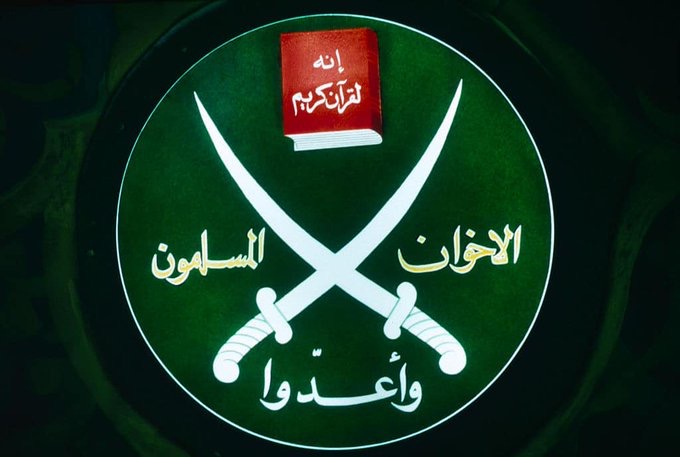
What If the U.S. Actually Pulls the Trigger?
Although the final decision to designate certain branches of the Muslim Brotherhood as foreign terrorist organizations in the United States has not yet been issued, experts warn of expected consequences for individuals, associations, and Islamic organizations suspected of links to the Brotherhood, particularly in political activity and fundraising.
If the U.S. State Department formally lists the Brotherhood under Section 219 of the Immigration and Nationality Act (as amended by the Antiterrorism and Effective Death Penalty Act of 1996), a number of significant legal and practical effects would follow, including:
Immediate freezing of all funds and property owned or controlled by the Brotherhood within U.S. jurisdiction, despite the fact that no organization officially carries the “Muslim Brotherhood” name in the country.
Criminalization of providing material support or resources to the group, punishable by up to 20 years in prison, or life imprisonment if such support results in death (under sections 2339A and 2339B of the U.S. penal code).
A permanent ban on entry to the United States for any member or supporter of the group, including those seeking political asylum on the grounds of being “Brotherhood opposition figures.”
The potential closure of any association, institution, or religious center proven to have provided support to the group, or freezing its assets.
These measures could affect prominent organizations such as the Council on American-Islamic Relations (CAIR), the Islamic Society of North America (ISNA), the Islamic Society of America, and Islamic Relief. Numerous student and charitable organizations could also face immediate investigations, potentially resulting in shutdowns, frozen assets, or legal action against leadership due to prior documented ties to the Brotherhood.
At the state level, Texas Governor Greg Abbott, also a Republican, recently classified the Muslim Brotherhood as a terrorist organization within the state, a move that included CAIR, which has filed a legal challenge against the decision.
Other potential consequences include the immediate halt of transactions by most global banks with any financial structures linked to the Brotherhood, out of fear of secondary U.S. sanctions. Countries engaging with such structures could face accountability under U.S. law, potentially including economic penalties.
For several years, extreme members of both the Republican and Democratic parties have pushed for the Brotherhood to be labeled a terrorist organization, citing alleged links to Hamas and Iran and claims of attempts to impose Sharia law in U.S. states such as Florida, Texas, and Michigan.
In July 2025, Republican Senator Ted Cruz of Texas, along with others, introduced legislation to designate the Brotherhood, citing the connection of a branch to Hamas and the October 7 operation, which killed at least 53 American citizens.
Other lawmakers, including Mario Diaz-Balart and Jared Moskowitz, reintroduced a bill titled “Muslim Brotherhood Terrorist Designation Act of 2025,” asserting that the group and its sub-organizations threaten U.S. national security and exploit U.S. and Western resources to promote violence and destabilization.
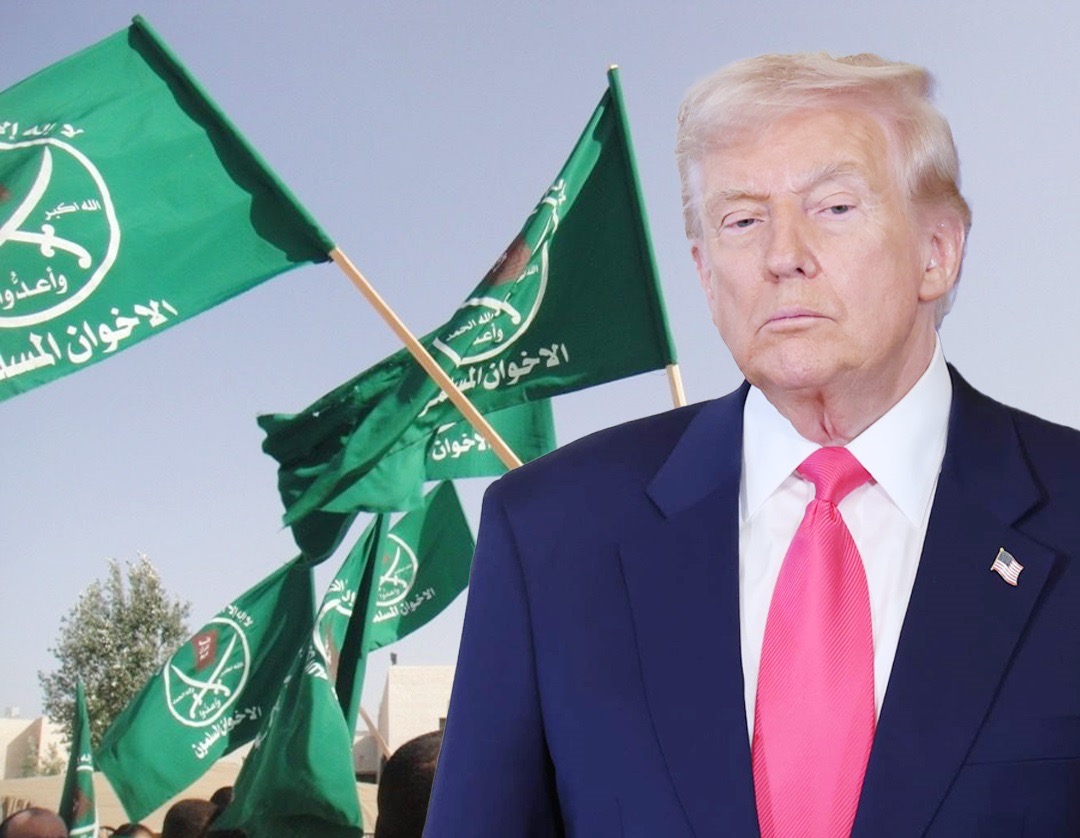
Will the Decision Remain on Hold?
Analysts believe that Trump’s decision to designate certain branches of the Muslim Brotherhood as foreign terrorist organizations was made hastily, primarily serving Israeli interests, and driven by pressures from those around him supportive of the Israeli Occupation.
Experts note the decision lacks actual enforcement tools due to legal and political obstacles previously studied during Trump’s first term, which prevented full implementation at the time.
This explains why Trump did not issue a direct ban, instead launching a “study process” through the State and Treasury Departments, setting a 30-day deadline for review followed by 45 days to implement any potential designation.
Currently, the responsibility falls on Secretary of State Marco Rubio and Treasury Secretary Scott Bessent to assess whether the branches cited in Trump’s order should face sanctions.
On August 12, 2025, Rubio acknowledged the process could take time, noting that the Muslim Brotherhood has multiple branches and affiliated fronts that must be examined individually and carefully.
In an interview with Sid & Friends In the Morning, he added that the official designation process is long and complex, and the U.S. government is committed to accuracy, though the initial steps toward designation have already begun.
On November 23, 2025, Trump told Just the News that he is preparing to designate the Muslim Brotherhood as a “foreign terrorist organization.”
“It will be done in the strongest and most powerful terms,” Trump said. “Final documents are being drawn.”
This announcement came days after Just the News published an in-depth investigation into Brotherhood activities and growing concerns within the Trump administration, which called for its designation and documented support for this approach.
During his first term, Trump tried aggressively to label the Muslim Brotherhood a foreign terrorist organization but faced a series of legal and political obstacles, some of which could have harmed U.S. interests, according to multiple American reports.
The Obstacles in Four Points
The challenges to designating the Muslim Brotherhood as a foreign terrorist organization can be summarized in four main areas:
Legal Obstacles: Washington currently lacks documented evidence linking the Brotherhood globally to terrorist operations meeting U.S. legal standards for designation.
Under U.S. law, an organization must engage in, or intend to engage in, terrorist activity that directly threatens U.S. security, citizens, or defense, economic, or foreign interests, and must train or recruit terrorists.
With no clear evidence linking the three branches cited in Trump’s order to direct threats against the U.S., formal designation is difficult. Moreover, U.S. designations do not automatically apply to groups classified by human rights organizations as “national liberation movements,” such as Hamas.
The designation also applies only to foreign organizations, not necessarily U.S.-based associations, many of which can challenge bans in court, complicating enforcement.
Political and Security Risks: U.S. security and political institutions warn that designating the Brotherhood without strong evidence could create a political vacuum in the Muslim world, potentially strengthening extremist groups hostile to the U.S. and increasing threats to national security.
Domestic Impact on American Muslims: Attempting to label U.S.-based associations linked to the Brotherhood risks sending a message that the U.S. government opposes Islam itself rather than a specific political current.
The Institute for Social Policy and Understanding (ISPU), which studies Muslims in the U.S., notes that such designations are seen as efforts to smear Muslims domestically, suppress civil society, and exacerbate Islamophobia.
International Political Complications: The Trump administration faces difficulty in broadly designating the Brotherhood as a terrorist organization because some countries have elected officials affiliated with the group. This creates political contradictions and complicates the imposition of a comprehensive ban.
Sources
- DESIGNATION OF CERTAIN MUSLIM BROTHERHOOD CHAPTERS AS FOREIGN TERRORIST ORGANIZATIONS AND SPECIALLY DESIGNATED GLOBAL TERRORISTS
- Trump moves to designate some Muslim Brotherhood chapters as terrorist groups
- EXCLUSIVE: Trump tells Just the News he will designate Muslim Brotherhood a terrorist organization
- Trump begins process of designating Muslim Brotherhood chapters as terrorist groups
- Secretary of State Marco Rubio with Sid Rosenberg of Sid and Friends in the Morning


